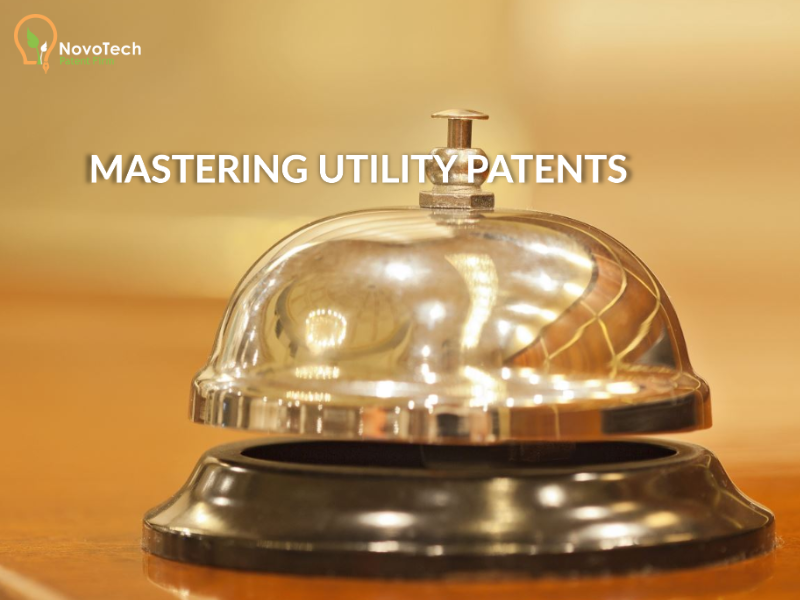
Understanding the Basics of Utility Patents
By Babak Akhlaghi on October 24, 2024. Navigating the world of patents can be complex. Especially when it comes to understanding utility patents.
What is a utility patent? How does it differ from other types of patents? What are the requirements for obtaining one? These are common questions that inventors and entrepreneurs often grapple with.
In this article, we aim to demystify the concept of utility patents. We’ll provide a clear, concise guide to the basics of utility patents, including their purpose, requirements, and examples.
Whether you’re an inventor, entrepreneur, or simply curious about intellectual property, this guide will provide valuable insights into the world of utility patents.
What Is Utility Patent?
A utility patent is a form of intellectual property protection. It’s granted to inventors who create a new and useful process, machine, manufacture, or composition of matter.
In simpler terms, if you invent a new kind of machine or a novel method of doing something, a utility patent can protect your invention. It prevents others from making, using, or selling your invention without your permission.
This type of patent is the most common among inventors. It forms a crucial part of the broader patent system.
Utility Patent Requirements
To qualify for a utility patent, an invention must meet certain criteria. It must be new, useful, and non-obvious.
The term “new” means that the invention must not have been previously known or used by others. It should not be already patented or described in a printed publication.
“Useful” refers to the invention’s functionality. It must provide some identifiable benefit and be capable of use.
The “non-obvious” criterion is a bit more complex. It means that the invention should not be obvious to a person having ordinary skill in the area of technology related to the invention. Essentially, the difference between your invention and prior knowledge must not be apparent to an a person having ordinary skill in the field of your invention. This can often be subjective, so a seasoned patent attorney is crucial to drafting an application that effectively addresses potential rejections.
Here are the key requirements for a utility patent:
- Novelty
- Usefulness
- Non-obviousness
These requirements ensure that only truly innovative ideas are granted utility patents.
The Utility Patent Application Process
The process of applying for a utility patent begins with a thorough patent search. This is to ensure that your invention is indeed novel.
Next, you prepare a detailed description of your invention. This includes any drawings or specifications that can help illustrate its functionality.
The heart of the application is the patent claims. These define the scope of protection granted by the patent.
Finally, the applicant submits the application to the United States Patent and Trademark Office (USPTO) for examination, which can take several years.
Utility Patent Example
To better understand utility patents, let’s look at an example. Consider a new type of coffee maker that brews coffee faster and more efficiently.
The utility patent for this invention would cover the unique method of brewing. Additionally, it would include detailed drawings and specifications of the new coffee maker.
This example illustrates how utility patents protect the functional aspects of an invention. They do not cover the aesthetic design, which would require a design patent.
Duration and Maintenance of Utility Patents
A utility patent typically lasts for 20 years from the filing date. This period of protection allows inventors to capitalize on their inventions.
However, to maintain the patent, periodic maintenance fees are required. These fees are due at 3.5, 7.5, and 11.5 years after the patent is granted.
Failure to pay these fees can result in the patent expiring before the 20-year term.
The Importance of Professional Legal Advice
Navigating the patent application process can be complex. It involves understanding intricate legal and technical details.
Hence, seeking professional legal advice is often beneficial. Patent attorneys or agents can help ensure your application is robust and meets all the necessary requirements.
Remember, a well-drafted application can significantly increase your chances of securing a utility patent.
Conclusion and Further Resources
Understanding the basics of utility patents is crucial for inventors and businesses. It helps protect your inventions and maintain a competitive edge.
There are numerous resources available for further learning. Websites like the United States Patent and Trademark Office (USPTO) provide comprehensive guides and tutorials.
Remember, staying informed and updated about patent laws can greatly benefit your invention journey. Keep exploring and learning!
Stay Informed with Expert Insights!
Want more valuable tips on navigating patent law and protecting your intellectual property? Join our free weekly newsletter for the latest updates, expert advice, and exclusive content straight to your inbox. Subscribe today and never miss out on essential information that can make all the difference in your patent journey! Subscribe to our Newsletter